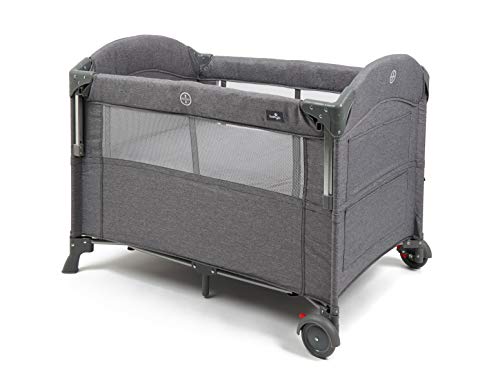
Baby Cots Online
FollowOverview
-
Founded Date 9 February 2012
-
Sectors Creative and Design
-
Posted Jobs 0
-
Viewed 4
Company Description
Five Killer Quora Answers To Tots And Cots
Tots and Cots: A Comprehensive Guide for Parents
When it pertains to making sure a safe and comfortable sleeping environment for children and young children, the options parents make– ranging from cribs to cots– can substantially affect their wellness. Today’s post dives deep into the complexities of picking the very best sleeping plans for Tots and cots, highlighting safety, style, functionality, and how these choices progress as a child grows.
Comprehending Tots and Cots
Tots typically refer to kids, especially toddlers aged in between 1 to 3 years, while cots are the sleeping arrangements particularly designed for infants and toddlers. The suitable sleeping devices for this age consists of different types of cots, cribs, and young child beds.

Kinds of Cots
Different styles exist to satisfy the diverse requirements of both moms and dads and children. Below is a list detailing the most typical types of cots offered:
-
Standard Crib
- A standard crib is developed for infants and generally consists of sides that can be adjusted to different heights.
-
Convertible Crib
- This type of crib can transform into a toddler bed, daybed, or full-sized bed as the kid grows, making it a long-lasting investment.
-
Portable Crib
- Likewise understood as travel cots, these are light-weight and easily foldable, perfect for traveling or smaller living spaces.
-
Co-Sleeper
- A co-sleeper crib attaches to the side of the parents’ bed, enabling simple access while ensuring the baby has a separate and safe sleeping area.
-
Young child Bed
- A young child bed is a little bed that looks like a basic bed but is created specifically for toddlers, normally including security rails.
-
Mini Crib
- Mini cribs are smaller sized than basic cribs, making them a great alternative for tight areas, but they appropriate for babies only.
Safety Considerations
Guaranteeing safety is critical when selecting a cot for a child. Here are important safety standards parents must consider:
- Check for CPSC Certification: Ensure that the cot adheres to the Consumer Product Safety Commission (CPSC) requirements.
- Prevent Drop-Sides: Cots with drop-sides have been linked to safety threats, and the most current safety policies restrict them.
- Utilize a Firm Mattress: A company mattress minimizes the threat of suffocation and need to fit snugly within the cot.
- Keep Bedding Simple: Use a fitted sheet and avoid pillows, comforters, and stuffed animals that can position suffocation threats.
- Follow Weight and Age Guidelines: Ensure the child has actually not surpassed the cot’s weight limit and is still within the advised age.
Transitioning from a Cot to a Toddler Bed
The transition from a cot to a toddler bed can be an emotional milestone for both moms and dads and kids. Here are steps to ease the transition:
Timing
Choosing when to transition can be subjective, but it’s typically advised to make the switch in between 18 months and 3 years, based on elements like:
- Physical Ability: If the kid is climbing up out of the cot.
- Potty Training: Consider transitioning if the child is toilet training and requires simpler access.
- Behavior: Exhibiting indications of maturity, such as following instructions or expressing a desire for self-reliance.
Tips for Making the Transition Smooth
-
Involve Your Child: Let the child select their brand-new bedding or bed decoration to instill enjoyment about the change.
-
Keep Routine Consistent: Maintain the child’s bedtime routine to provide comfort during this duration of change.
-
Explain the Change: Discuss the transition to a toddler bed positively, making it sound like an excellent experience.
-
Safety Measures: Place the bed against the wall or use bed rails to prevent falling during sleep.
Picking the Right Bed
When picking a toddler bed, parents require to think about factors like:
- Height: Low-profile beds are ideal for toddlers who may fall out throughout sleep.
- Toughness: Ensure the bed can withstand active play in addition to sleep.
- Style and Design: Choose a style that complements the child’s room and is interesting the kid.
Picking the right cot for your kid can be a daunting process, but comprehending the alternatives offered, crucial safety factors to consider, and the ideal timing for transitioning to a young child bed can make this journey simpler for parents. Investing effort and time into these choices will make sure that your child has a safe, comfortable, and nurturing sleep environment.
FAQs
1. What is the difference in between a cot and a crib?
- A cot is generally a smaller sized bed created for more youthful toddlers, while a crib is a bigger bed that is typically ideal for infants up to 3 years of ages.
2. When should I move my child from a crib to a toddler bed?
- The shift time is normally between 18 months and 3 years; this modification is based on the kid’s physical abilities and behavioral indications.
3. How can I guarantee my child is safe while sleeping?
- Always adhere to safety standards, use a firm bed mattress with an easy bedding arrangement, and monitor the cot’s weight limitation.
4. What should I do if my child tries to climb out of the cot?

- If your child is climbing out, it might be time to think about transitioning to a toddler bed to prevent falls.
5. Can I use the very same mattress when transitioning?
- Typically, it is best to replace the crib mattress with one that is particular to the toddler bed. Guarantee it fits snugly and sticks to security requirements.
By thinking about these aspects, parents can design healthy sleep habits and offer their children with a protected environment that promotes peaceful sleep. Buying quality sleeping plans will contribute to the child’s general development and happiness.


